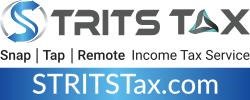Leveraging Tax Credits for Paid Leave: A Deep Dive into the American Rescue Plan Act of 2021

Summary:
The American Rescue Plan Act of 2021 introduced pivotal tax credits for paid leave, offering crucial support to individuals and businesses impacted by the ongoing challenges of the COVID-19 pandemic. This article focuses on the specific provisions related to self-employed individuals as outlined by the Internal Revenue Service (IRS). We explore eligibility criteria, qualified amounts, claiming procedures, and provide insights into maximizing these tax benefits.
Detail Explanation:
Understanding the American Rescue Plan Act of 2021:
Enacted in March 2021, the American Rescue Plan Act aimed to provide economic assistance to those affected by the pandemic. Among its provisions, tax credits for paid leave were extended and expanded to include self-employed individuals. The act became a lifeline for individuals and businesses seeking relief.
Provisions for Self-Employed Individuals:
1. Eligibility Criteria:
Self-employed individuals qualify for the paid leave tax credits if they can demonstrate an inability to work or telework due to COVID-19-related reasons. The eligibility criteria set by the IRS guide the application of these credits.
2. Qualified Sick Leave Equivalent Amount:
Self-employed individuals can claim a refundable tax credit against their income tax liability for up to 100% of the qualified sick leave equivalent amount. This amount is determined by factors such as quarantine or isolation orders, COVID-19 symptoms, or caring for someone under quarantine.
3. Qualified Family Leave Equivalent Amount:
Similar to sick leave, self-employed individuals can claim a tax credit for qualified family leave equivalent amounts. This credit covers situations where individuals were unable to work due to the closure of a child’s school or care facility.
4. Claiming the Tax Credit:
To claim the tax credit, self-employed individuals need to report the qualified sick and family leave equivalent amounts on their tax return for the relevant year. The IRS provides clear guidance on the documentation required to support these claims.
Key Considerations:
– Record-Keeping:
Maintaining meticulous records is crucial for self-employed individuals looking to claim these tax credits. Documentation should include details of quarantine orders, COVID-19 symptoms, and any relevant information supporting the inability to work or telework.
– Application Period:
The tax credits under the American Rescue Plan Act of 2021 are applicable for a specified period. Self-employed individuals should be aware of the timelines and ensure timely submission of their claims.
– Consultation and Assistance:
Given the complexities of tax regulations, self-employed individuals may benefit from consulting tax professionals or utilizing available resources from the IRS. Professional assistance can ensure accurate submissions and maximize the benefits of these tax credits.
Pros and Cons:
| Pros | Cons |
|---|---|
| Provides financial relief for self-employed | Eligibility criteria must be met |
| Refundable tax credits ease financial burden | Application and documentation can be complex |
| Addresses specific challenges of self-employment | Limited time frame for claiming credits |
| Supports those unable to work due to COVID-19 | Potential changes in tax regulations |
Tips for the Reader 📘:
Enhance your strategy for claiming paid leave tax credits by maintaining detailed records of COVID-19-related circumstances. Utilize professional assistance to navigate complexities and ensure accurate submissions. Stay informed about timelines to maximize benefits. 📆
Follow our Social Media for more information:
The American Rescue Plan Act of 2021 is a legislative measure enacted in March 2021 to provide economic assistance and relief to individuals and businesses affected by the COVID-19 pandemic.
The act extends and expands tax credits for paid leave to include self-employed individuals, offering financial support for those unable to work due to COVID-19-related reasons.
Self-employed individuals qualify if they can demonstrate an inability to work or telework due to COVID-19-related reasons. The IRS sets specific eligibility criteria.
The Qualified Sick Leave Equivalent Amount is a refundable tax credit that self-employed individuals can claim against their income tax liability, covering up to 100% of specific amounts related to sick leave situations.
Similar to sick leave, the Qualified Family Leave Equivalent Amount provides a tax credit for self-employed individuals unable to work due to the closure of a child's school or care facility.
To claim the tax credit, self-employed individuals need to report the qualified sick and family leave equivalent amounts on their tax return for the relevant year, following guidelines provided by the IRS.
Self-employed individuals should focus on meticulous record-keeping, be aware of application timelines, and consider consulting tax professionals to navigate complexities and maximize benefits.
Paid leave tax credits provide financial relief, ease the burden for self-employed individuals, and address specific challenges related to the COVID-19 pandemic.
While offering financial relief, the application and documentation process can be complex, and there is a limited time frame for claiming the credits.
Enhance your strategy by maintaining detailed records of COVID-19-related circumstances, seeking professional assistance, and staying informed about timelines to maximize benefits.

